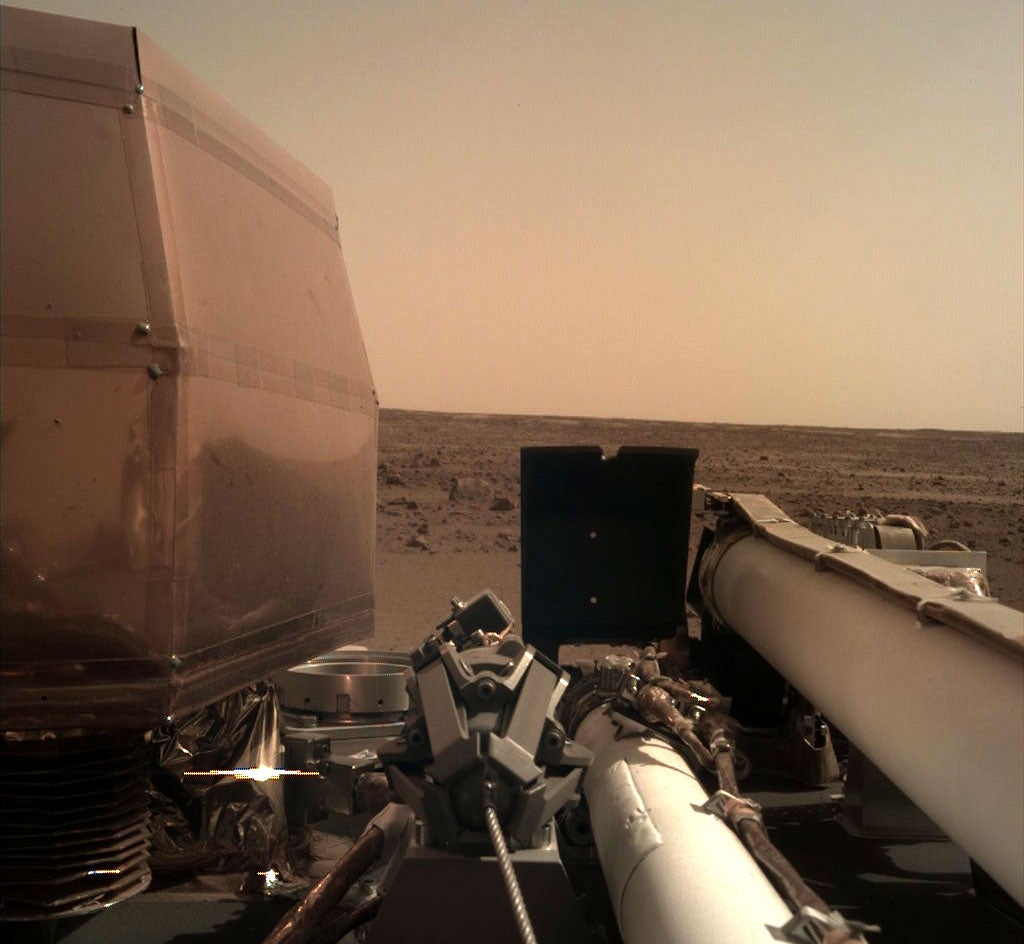
The NASA Insight Lander has set a new solar power record – generating more than 4,500Wh of power in its first day on Mars – more than any lander or rover ever deployed by the US space agency.
The InSight Lander, described as ‘AIBO in space’ (the automated robot dog developed by Sony), touched down at the Mars landing site, a lava plain called Elysium Planitia, on 26 November. It successfully deployed its solar power wings within hours.
“It is great to get our first ‘off-world record’ on our very first full day on Mars,” said InSight project manager Tom Hoffman, working at NASA’s Jet Propulsion Laboratory.
“But even better than the achievement of generating more electricity than any mission before us is what it represents for performing our upcoming engineering tasks. The 4,588 watt-hours we produced during sol 1 means we currently have more than enough juice to perform these tasks and move forward with our science mission.”
The InSight mission is expected to run for two years, the equivalent of one Mars year, and cost around $850m in total. The lander will roam the terrain and gather important data, including photographs, to help the mission team to outline Mars’ interior structure and reveal unprecedented insight into the planet’s formation.
NASA Insight Lander: Avoiding a rocky landing
The area in which the spacecraft landed could have affected its ability to deploy its solar arrays, NADA scientists said, having landed into a shallow crater filled with dust and sand at a 4° tilt.
How well do you really know your competitors?
Access the most comprehensive Company Profiles on the market, powered by GlobalData. Save hours of research. Gain competitive edge.

Thank you!
Your download email will arrive shortly
Not ready to buy yet? Download a free sample
We are confident about the unique quality of our Company Profiles. However, we want you to make the most beneficial decision for your business, so we offer a free sample that you can download by submitting the below form
By GlobalDataAny steeper than 15° incline and this could have impaired InSight’s ability to open its solar equipment or the deployment of InSight’s Mole to start digging the subsoil of Mars, according to the researchers.
Hoffman said: “The science team had been hoping to land in a sandy area with few rocks since we chose the landing site, so we couldn’t be happier. There are no landing pads or runways on Mars, so coming down in an area that is basically a large sandbox without any large rocks should make instrument deployment easier and provide a great place for our Mole to start burrowing.”
While preliminary images suggest that the landing site has few rocks, higher resolution photography captured by the NASA InSight Lander will give the team a better picture of the immediate area, which will help the team to see the best locations to place instruments using the spacecraft’s robot arm.
InSight principal investigator Bruce Banerdt said: “We are looking forward to higher-definition pictures to confirm this preliminary assessment. If these few images — with resolution-reducing dust covers on — are accurate, it bodes well for both instrument deployment and the mole penetration of our subsurface heat-flow experiment.”
Previous solar records on Mars
The InSight Lander has surpassed previous attempts to generate solar power on Mars by quite a margin. NASA’s Curiosity rover, which landed on Mars in August 2012, was able to generate 2,806Wh of solar power in one sol, or one Martian day.
However, the Curiosity rover was powered by a nuclear system known as a radioisotope thermoelectric generator, whereas the InSight Lander is 100% solar-powered.
Fellow solar-powered spacecraft – the Phoenix Lander – reached Mars in May 2008, was only able to generate a maximum of around 1,800Wh in any one day, according to NASA officials.
The development shows just how far solar technology has come in the last decade, with NASA landers of today provably generating two and a half times more solar power than previous models.




